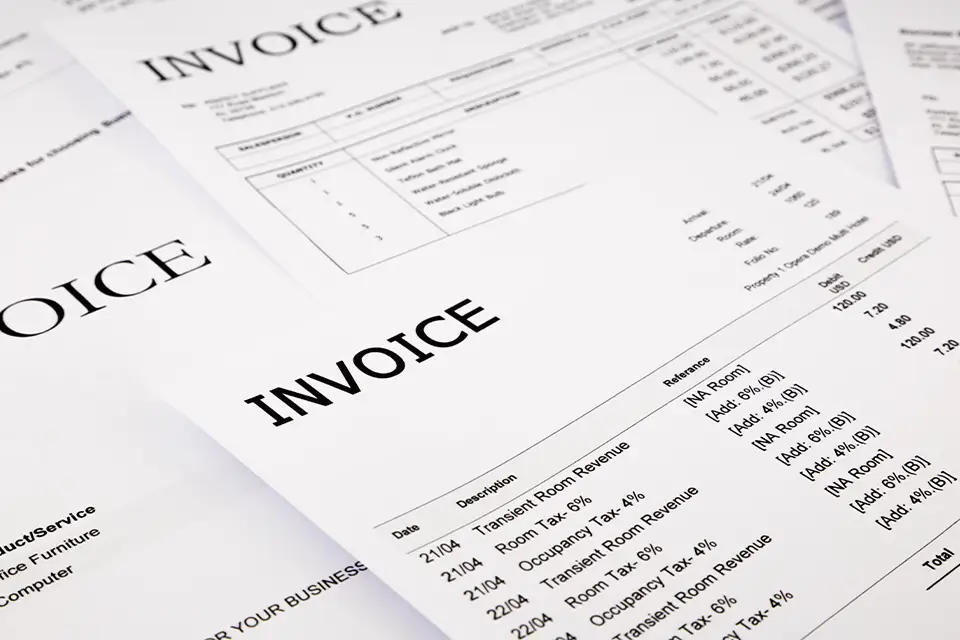Navigating small business bookkeeping in 2024 is crucial for ensuring that businesses thrive in an ever-evolving financial landscape. Effective bookkeeping practices are at the heart of a company’s success, and understanding these practices can significantly impact a small business’s growth and stability. Today we aim to provide clear, actionable strategies for small business owners, enabling them to manage their finances with confidence. By embracing these small business bookkeeping principles, owners can transform what often seems like a daunting task into a powerful tool for driving their business forward.
Cash Flow Management
Effective cash flow management is pivotal for the prosperity and resilience of small businesses bookkeeping. It encompasses a strategic approach to managing the dynamics of money flowing in and out, ensuring operational viability and fostering growth opportunities.
Understanding Your Cash Flow Cycle
A thorough grasp of your business’s cash flow cycle is foundational. This cycle maps the journey of cash as it enters and exits your business, pinpointing significant inflows from sales or receivables and outflows for expenses like inventory or operations. Grasping this cycle aids in forecasting cash availability, enabling more informed financial planning and decision-making.
Enhancing Receivables
Accelerating receivables is vital for maintaining a healthy cash flow. Prompt invoicing post-delivery of goods or services ensures timely payments. Facilitating multiple payment options can expedite this process, making it convenient for customers to settle their dues swiftly. Regular follow-ups on outstanding invoices also play a crucial role in ensuring receivables are collected without undue delay.
Managing Payables with Foresight
Strategic management of payables can alleviate cash flow pressures. Negotiating extended payment terms with suppliers can provide breathing room, allowing you to align outflows with your cash flow cycle more effectively. Prioritizing payments based on their urgency and impact on your business ensures critical operations remain unaffected while managing liquidity.
Establishing a Cash Reserve
A cash reserve acts as a financial safety net, poised to cushion your business during lean periods or unexpected financial challenges. Striving for a reserve that covers 2-3 months of operating expenses can significantly enhance your business’s ability to weather fluctuations in cash flow without compromising on growth or operational capabilities.
Leveraging Cash Flow Forecasting
Cash flow forecasting is an indispensable tool, enabling businesses to anticipate and plan for future financial positions. Utilizing historical data alongside projected financial activities offers insights into potential cash shortfalls or surpluses, facilitating preemptive measures to maintain financial equilibrium.
Streamlining Expenses
Regular scrutiny of business expenses to identify and eliminate non-essential spending can free up cash, improving overall financial health. This disciplined approach to expense management ensures that resources are focused on areas that directly contribute to business growth and operational efficiency.
Exploring Financing Options
For moments when cash flow imbalances arise, exploring financing solutions such as lines of credit or invoice financing can provide the necessary liquidity to bridge gaps. These options should be carefully considered to ensure they align with your business’s financial strategy and capacity.
Tools for Effective Cash Flow Analysis
Utilizing a cash flow statement is essential for a clear, monthly overview of cash movements within your business. Coupled with rigorous budgeting and the integration of financial software like QuickBooks, businesses can achieve a more nuanced understanding and control over their financial operations, ensuring real-time insights and decision-making agility.
Master Invoice Management

Managing invoices effectively is a cornerstone for maintaining robust cash flow and fostering strong customer relationships. Efficient invoice management not only ensures timely payments but also streamlines financial operations, contributing to overall business health.
Prompt and Accurate Invoicing
The foundation of effective invoice management lies in the prompt issuance of invoices. Delayed invoicing can lead to delayed payments, directly impacting your cash flow. Ensuring invoices are accurate, detailed, and sent immediately after goods or services are delivered signals professionalism and reduces the likelihood of disputes or delays in payment.
Clear Payment Terms
Setting clear, concise payment terms at the outset of any customer relationship or service agreement is critical. These terms should cover payment deadlines, accepted payment methods, and any late payment fees. Clear terms help set expectations and provide a legal framework for recourse in case of delayed payments.
Streamlined Payment Processes
In today’s digital age, offering multiple payment options can significantly expedite the receipt of payments. Online payment systems, direct bank transfers, and mobile payment options cater to a wide range of customer preferences, making it easier and faster for your clients to settle their invoices.
Regular Follow-up and Communication
Maintaining open lines of communication with clients about their invoice status is key to managing receivables effectively. Regular follow-ups, especially for overdue invoices, help keep payments on track. Employing polite yet persistent reminder systems, whether through automated emails or personal calls, can encourage timely payments without straining customer relationships.
Utilizing Technology for Efficiency
Leveraging technology can transform invoice management from a tedious task to a streamlined, efficient process. Accounting software creates, sends, tracks, and manages invoices with ease, empower your small business bookkeeping. These tools often come with features for automatic reminders and direct payment options, reducing the administrative burden and improving cash flow management.
Monitoring and Analysis
Keeping a close eye on invoicing patterns, payment timelines, and customer payment behaviors provides valuable insights for business decisions. Regular analysis can identify trends, such as consistently late-paying clients or services leading to frequent invoicing errors, guiding adjustments in business practices or terms.
Building Strong Customer Relationships
Beyond the mechanics of invoice management, building and maintaining strong relationships with your clients can have a significant positive impact on the timeliness of payments. Trust and mutual respect can often motivate clients to prioritize payments to your business, while open dialogue can help quickly resolve any issues that may delay payments.
Track Every Expense
Effective business expense tracking is not just about keeping tabs on how much money is going out; it’s setting a strategy for small business bookkeeping that identifies cost-saving opportunities, ensures tax compliance, and enhances financial decision-making.
Importance of Diligent Expense Tracking
Tracking every business expense, no matter how small, provides a clear picture of where your money is going. This visibility is crucial for budgeting, forecasting, and preparing accurate financial statements. Moreover, diligent record-keeping supports tax compliance, ensuring that you can confidently claim all eligible deductions and credits, thereby minimizing your tax liability.
Categorizing Expenses
To streamline expense tracking, categorize your expenses from the outset. Common categories include rent, utilities, salaries, marketing, and professional fees. This not only simplifies small business bookkeeping but also aids in analyzing your spending patterns, allowing you to identify areas where you can cut costs without impacting business operations.
Leveraging Technology
In today’s digital era, leveraging technology for expense tracking is a game-changer, for recording and categorizing expenses on the go, attaching receipts digitally, and integrating with bank accounts and credit cards for real-time expense monitoring. This automation not only saves time but also reduces the risk of human error.
Regular Review and Analysis
Make it a habit to review and analyze your expenses regularly — monthly or quarterly. This practice helps you stay on top of your spending, gauge the financial health of your business, and make informed decisions about where to allocate resources for growth. During these reviews, assess whether each expense is essential and aligned with your business goals.
Managing Receipts Efficiently
Efficient management of receipts is pivotal for accurate expense tracking. Digital solutions that allow you to scan and store receipts electronically can be invaluable. Not only do they keep your records organized and accessible, but they also prepare you for tax time and any potential audits.
Implementing a Spending Policy
Establishing clear guidelines for business spending can prevent unnecessary expenses and ensure that all expenditures are pre-approved and aligned with business objectives. A well-defined spending policy communicates spending limits and approval processes to your team, fostering a culture of fiscal responsibility.
Training Your Team
If your business involves multiple team members making purchases, training them on proper expense tracking practices is essential. This includes educating them on your spending policy, how to categorize expenses accurately, and the importance of timely and precise record-keeping.
Balance Sheet Management Is Vital

Balance sheet management is essential for small business owners aiming to maintain a healthy financial standing and foster long-term growth. A well-managed balance sheet not only reflects the company’s current financial health but also serves as a critical tool for making informed business decisions.
Understanding Balance Sheet Components
A balance sheet comprises three main components: assets, liabilities, and equity. Assets are what your business owns, liabilities are what it owes, and equity represents the owner’s share in the business. Accurate and up-to-date records of these elements are crucial for understanding your financial position at any given time.
Regular Updating and Review
The key to effective balance sheet management is the regular updating and review of all entries. This ensures that the financial information accurately reflects the business’s current situation, enabling owners to make timely decisions based on the most relevant data. Monthly reviews are recommended to track changes in assets, liabilities, and equity.
Asset Management
Optimizing asset management involves not just tracking what you own but also evaluating the productivity and efficiency of these assets. This could mean regularly assessing inventory levels to prevent overstocking, managing accounts receivable to ensure timely collections, and investing in assets that offer the best returns for the business.
Liability Control
Controlling liabilities is about managing what you owe in a way that supports your business’s financial health. This includes negotiating favorable terms on debt to reduce interest costs, paying off high-interest debts as quickly as possible, and avoiding unnecessary borrowing by optimizing cash flow management.
Equity Insights
Equity management involves understanding the owner’s stake in the business. Reinvesting profits can strengthen equity, supporting growth and stability. Regularly assessing the equity position helps in making informed decisions about dividends, reinvestments, and capital structure optimization.
Utilizing Financial Ratios
Financial ratios derived from the balance sheet can provide valuable insights into the business’s financial health. Ratios such as the debt-to-equity ratio, current ratio, and quick ratio offer a quick assessment of financial stability, liquidity, and long-term solvency. Small business owners should familiarize themselves with these ratios to monitor their business’s financial trends over time.
Planning for the Future
Effective balance sheet management is not only about maintaining current financial health but also about planning for the future. This includes setting financial goals, planning for capital expenditures, and preparing for potential financial challenges. A solid understanding of the balance sheet can guide strategic planning and investment decisions.
Get on the Right Track Today

Small business bookkeeping is a multifaceted challenge that requires a deep understanding of cash flow management, invoice management, business expense tracking, and balance sheet management. These critical areas form the backbone of a robust financial strategy, empowering small business owners to steer their enterprises toward sustained growth and success amidst today’s dynamic economic conditions.
Excerpts from an article by Lucia & Company


